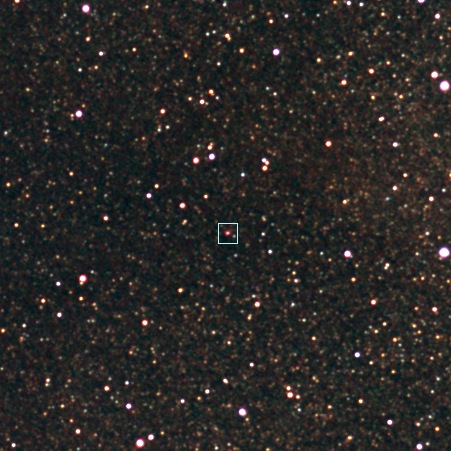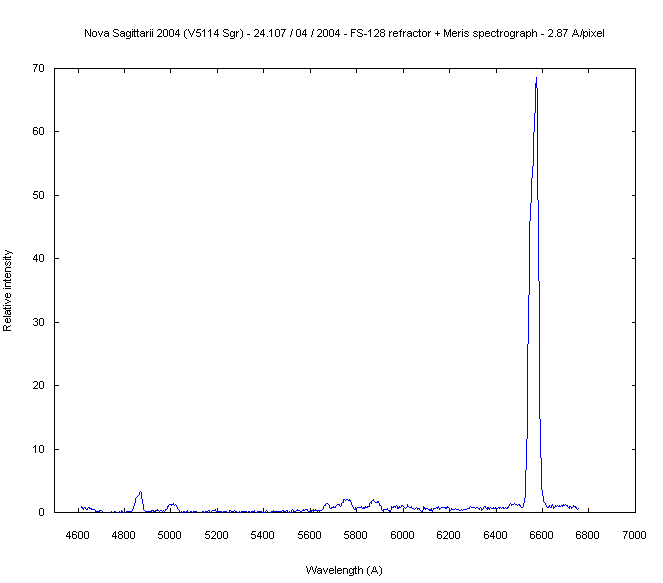NOVA
SAGITTARII 2004 (V5114 Sgr)
Co-discovered by W. Liller, Vina del Mar, Chile, on
a
pair of Technical Pan film images taken with an 85-mm Nikon camera lens on March 17.342 and March 17.346 UT 2004
(V=8.64), and Hideo Nishimura, Kakegawa, Shizuoka-ken, Japan, from two Fuji T-Max films taken around Mar. 15.82 UT with a
Pentax 200-mm f/4 lens.
See IAU Circular 8306.
Localization of the nova
(2000.0): RA = 18h19m32.3s - DEC = -28°36'35"
Image
of V5114 Sgr the 25.08 April 2004

Canon
EOS 10D + Canon 200 mm f/2.8 - Stack of 13 x 2 minutes exposure -
C. Buil - Castanet Tolosan
Note the intense red aspect (a near pure Ha
emission, see spectrum below)
April 24.107 UT 2004 Observation (AAVSO estimated magnitude:
12.0)
Observatory: Castanet Tolosan (France)
- IAU959
Observer: Christian Buil
Instrument: Takahashi
FS-128 refractor (5-inch aperture) - MERIS
spectrograph (sampling of 2.87 A/pixel) + Audine KAF-0401E CCD
Cumulative exposure time of 26
minutes (stack of 26
two minutes frame)

A raw 2-minutes
exposure of V5114 Sgr. The object is faint: only the intense H-alpha emission
is visible at right. The intense vertical lines are from the sky pollution (high
pressure sodium lamp). This 2D spectrum is colored artificially.

The
2D spectrum after stacking the 26 two-minutes exposures, geometric correction
and sky subtraction.


The spectrum is corrected for the instrumental spectral response.
Download
ASCII spectra (240404.DAT)
The
Ha
measured intensity is 68.5 time the continuum at 6660 angstroms. The FWHM of
this line is 2060 km/sec +/- 50 km/sec. FWZI (Full Width at Zero Intensity) = about 3800
km/sec +/150 km/sec.
The instrument
used


Click
on the image for enlarge - MERIS spectrograph See
also the "Bareges" spectrograph (ARAS
site)
Mitsugu Fujii
spectra of V5114 Sgr for the date March.
18.82 UT and April 4.80 UT.
Back
the novae page






